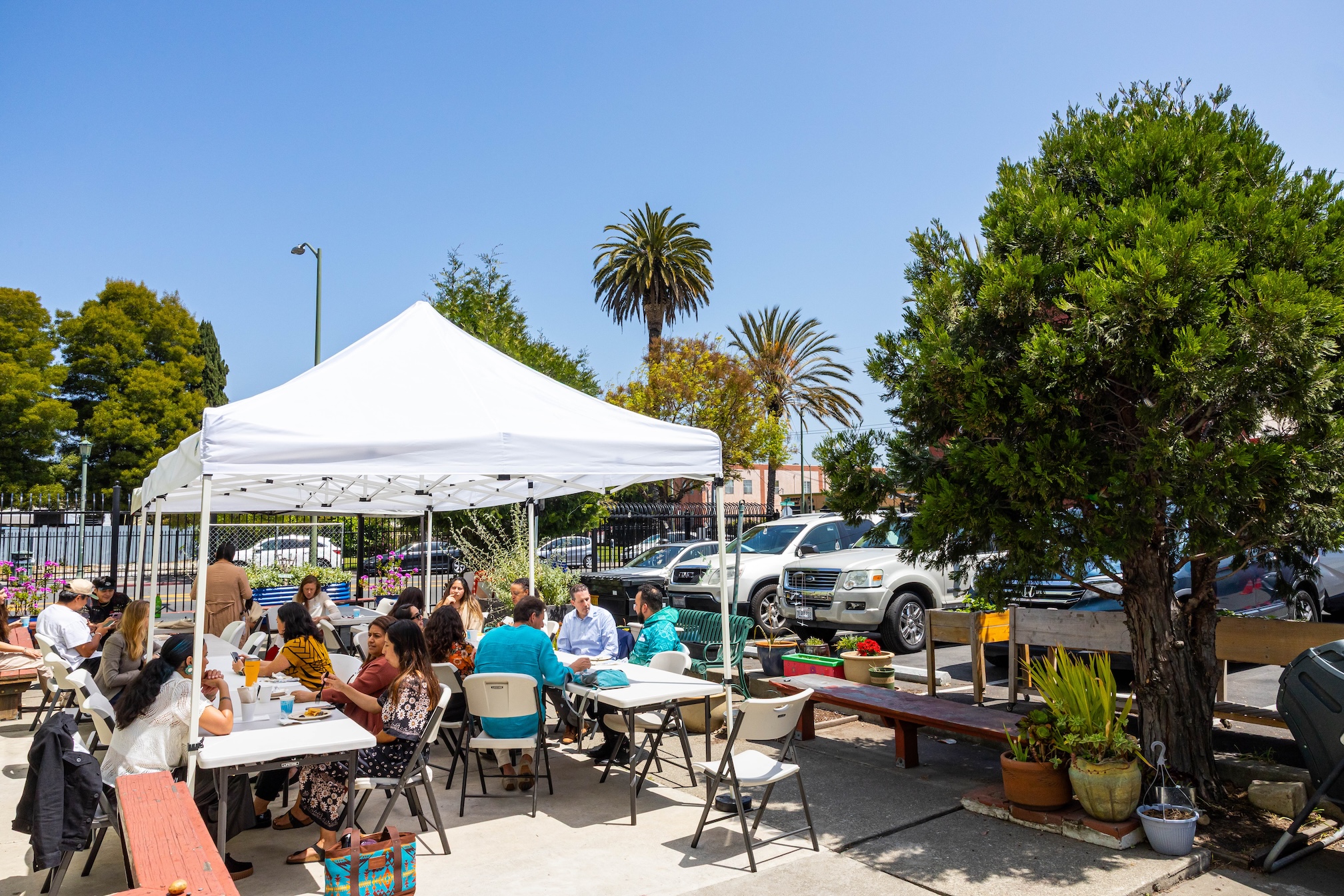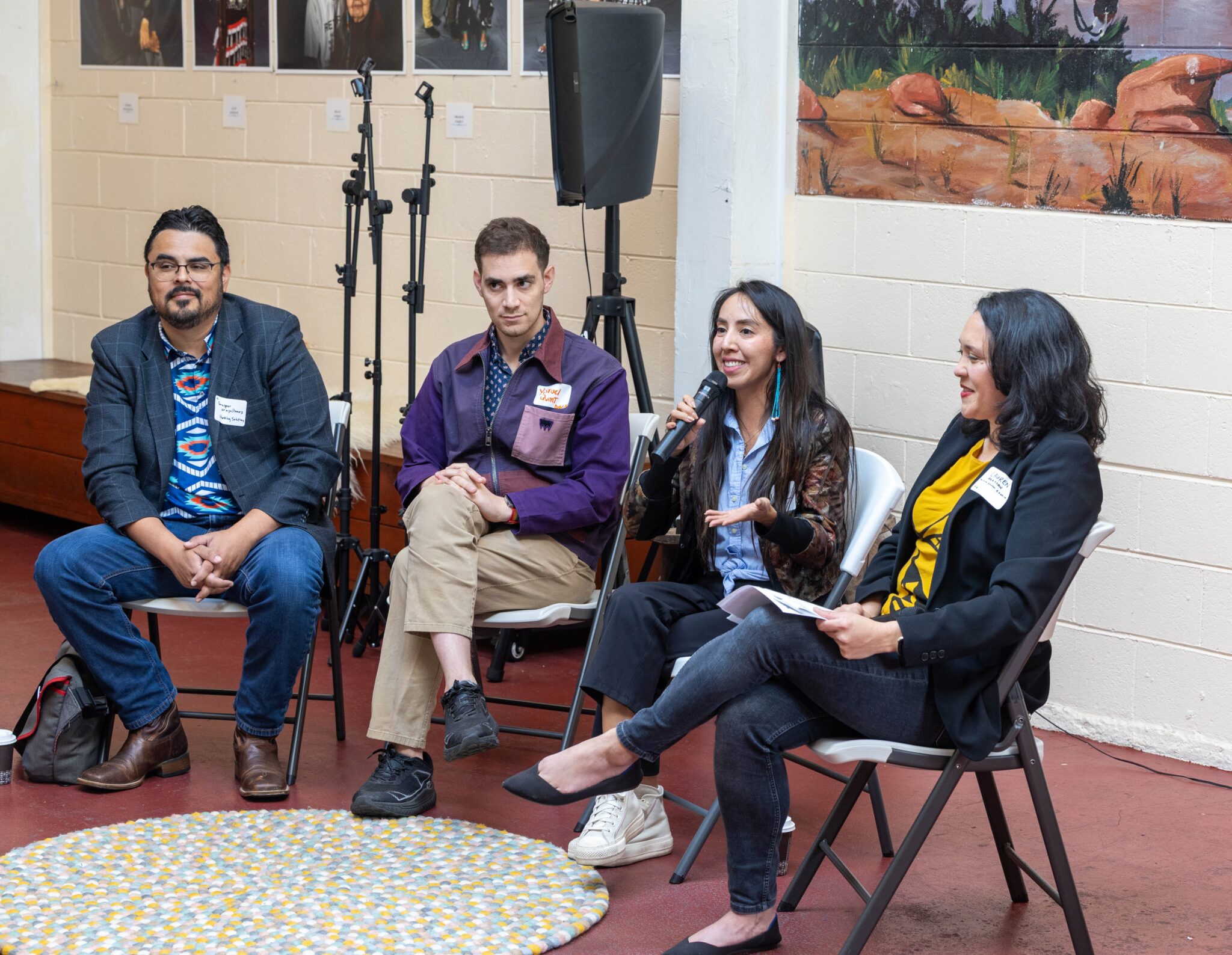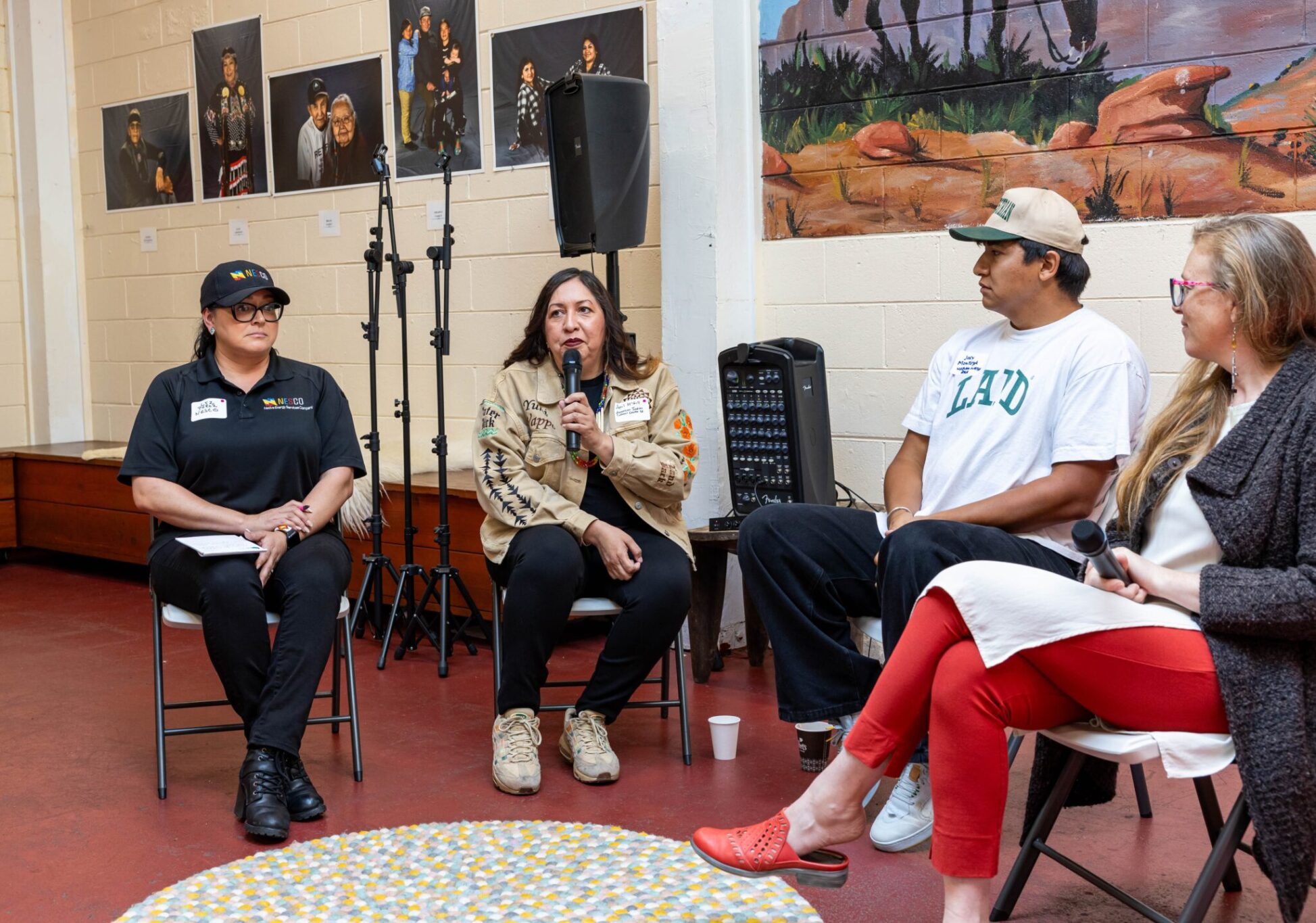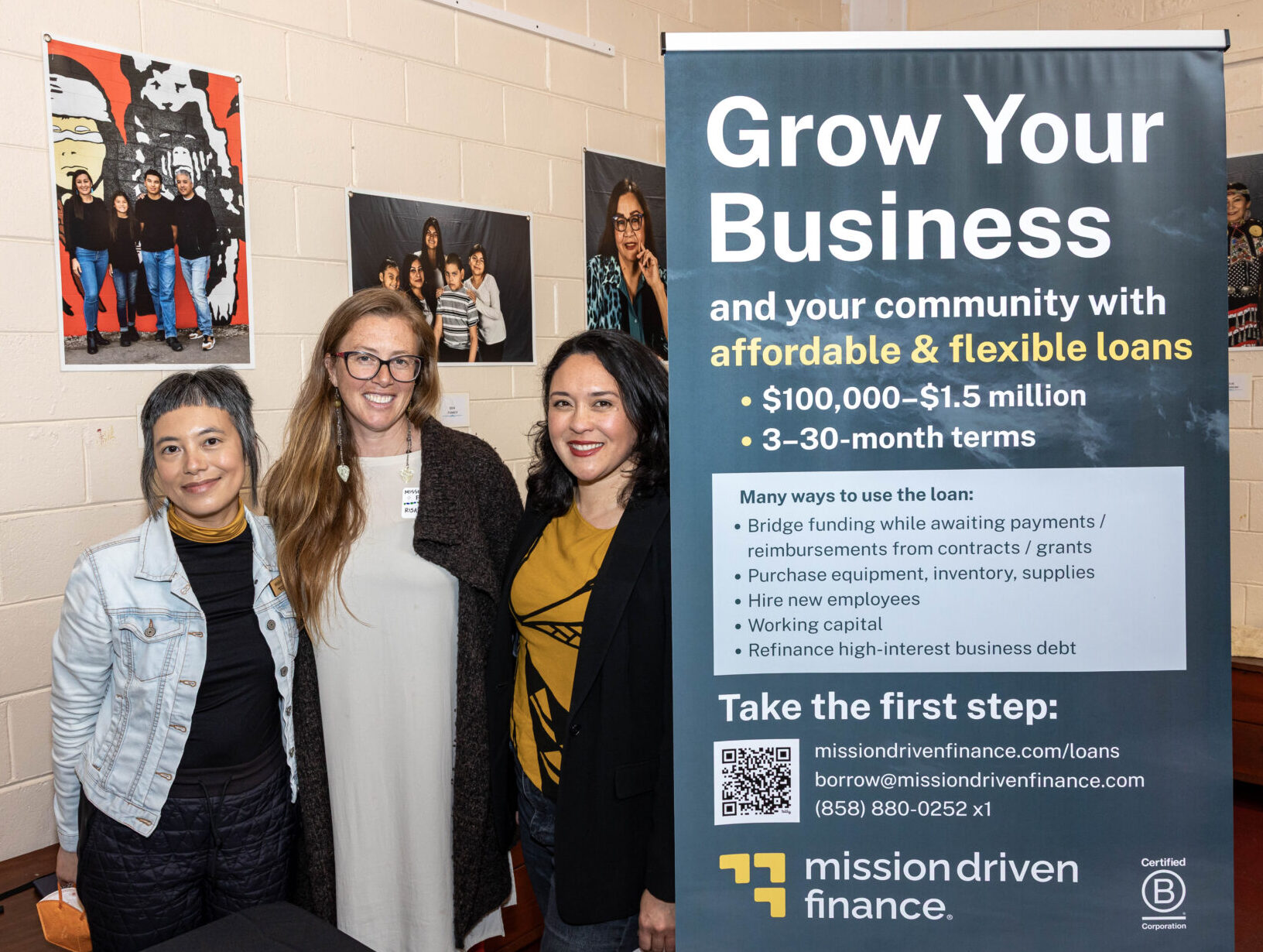Ever feel like you’re navigating a maze when it comes to finding the right funding for your business?
You’re not alone.
All too often, entrepreneurs, especially those building businesses rooted in community and values, hit a wall trying to access capital that aligns with their mission. This spring, Mission Driven Finance, along with fellow capital providers and visionary entrepreneurs, gathered for Trading at the Bay* in Oakland, CA, to flip the script on conventional funding conversations. We explored how to find capital that fits your goals, respects your values, and empowers you to own your power in the funding journey.
A beautiful day for connection on the sunny side of the Bay (photo credit Irwin Lewis)
Some key takeaways:
Talking to Funders: Know Your Worth
Getting funding can feel intimidating, but remember, you bring value to the table.
- Own your power: Don’t be afraid to state your needs clearly. You can help define what success looks like, prioritize safety (cultural and otherwise), and push for fair processes. Funders don’t hold all the cards.
- Know your stuff: Approach conversations with confidence in why you started or run this business now, knowing your business’s worth, key drivers, and how you navigate changes in your industry. You want to show that you’re a solid bet in uncertain times.
- Ask questions: Treat it like vetting a partner, because it is. Ask funders for references from other businesses they’ve funded. Talk to those entrepreneurs.
- Be crystal clear: Tell funders exactly what you need the money for, how much, and why. Example:
“I need $10k to buy X machine, which will let me produce Y more units that customers are asking for, but I can’t deliver with our current setup.”
Funding Options Explained: Finding the Right Fit
Think of funding types like different tools—use the right one for the job.
Funder panel (L–R): Gaspar Magallanes, Yisroel Quint, Nicole Johnny, Lauren Grattan (photo credit Irwin Lewis)
Grants
Best for: Specific projects, getting started, sometimes including research and development, and community impact work
Where to look:
- Tribal Funding Registry (tribalfunding.org)
- City and county websites (You might need to dig; they aren’t always well-advertised.)
- Foundations (often for nonprofit activities)
- Fellowships (can provide time/space to develop ideas)
Keep in mind: Grant hunting, writing applications, and reporting take time and effort. Make sure the “juice is worth the squeeze” when assessing a grant opportunity. View foundation “ratings” by current and former grantees to learn more about what specific foundations expect: grantadvisor.org
Focus on building relationships. As Yisroel Quint said (quoting his mentor Paula Morris),
“If you want money, ask for advice. If you want advice, ask for money.” Funders often want to offer more than just cash.
They can have a different view on the landscape and make connections with other resources.
Loans
Best for: Buying inventory or equipment, covering operations during growth, and managing cash flow
Where to look:
- CDFIs (Community Development Financial Institutions) that finance small businesses in the Bay Area, like Working Solutions and Pacific Community Ventures, that care about community impact, not just repayment
- Look up mission-aligned banks and credit unions that may prioritize your success as a small business
- Ask business support organizations for their recommendations on lenders and check out other groups, such as:
- Local Chambers of Commerce
- Small Business Development Centers (SBDCs)
- Specialized centers (for women, veterans, etc.), often at universities
- Alliance for Community Development
- National Association of Women Business Owners (NAWBO)
- Renaissance Entrepreneurship Center
- Alliance for Community Development’s Good Money Guide
Watch out for merchant cash advances. They promise fast cash but often come with very high costs and tough terms. The speed can be tempting, but read the fine print carefully.
Get organized. Have your financial info ready before you talk to lenders. This includes both historical financials (at least last year’s info) and future projections. If you need help putting these together, see the technical assistance resources.
Talk to your lender. If your business hits a rough patch or you think you might miss a payment, let your lender know ASAP. Most want to help you figure it out. Don’t ghost them.
Gut check: Does the lender keep their promises during the application process? That may show how they’ll act later.
Be strategic: Will this loan actually help you reach your business goals? Don’t take on debt just because you can.
Equity
Best for: Major scaling and growth when you need more capital than a loan
What it is: Selling a percentage of your company—the investor becomes a part owner
It’s a commitment: Think long-term partnership—an investment cycle often lasts eight years or more (“not unlike the average American marriage”)
Consider:
- How much control are you comfortable giving up?
- What’s the plan for the investor to eventually get their money back (the “exit strategy”)?
Look for:
- Impact investors who care about your mission and financial returns
- Founder-friendly investors who respect your vision and leadership
- Example:
“Some investors, like Raven Indigenous Capital Partners, explore options like helping founders sell ownership back to their Tribe (like Eighth Generation did).” — Nicole Johnny
Do your homework. Ask for references, talk to other founders in their portfolio, and ask tough questions upfront
Getting Through Tough Times
Every entrepreneur faces challenges—those “valley of death” moments when cash is tight. It can go against your instincts to be vulnerable about your business, but connecting with others who have walked similar paths can help.
Entrepreneur panel (L–R): Liz Perez, April McGill, Joey Montoya, Risa Blumlein Keeper (photo credit Irwin Lewis)
Real Talk from Peers
Joey Montoya (Urban Native Era) “bootstrapped” for eight years—not taking outside money to grow—and constantly tweaked designs and focused on his brand story before landing a huge deal with outdoor retailer REI.
April McGill (American Indian Cultural Center) navigated the ups and downs of government grant cycles, always “chasing money” but staying focused on uplifting artists.
Liz Perez (GC Green) started her business out of fear and necessity, initially using expensive funding (18% factoring) to develop a successful track record and build relationships to get better financing terms.
Practical Tips
Big orders:
“Use purchase orders from large clients to qualify for bridge loans or negotiate advance payments to manage cash flow.” — Joey Montoya
Know your why:
“Keep your end goal in mind—it fuels perseverance.” — Joey Montoya
Learn and adapt: Every challenge teaches you something for the next one.
“We all fail and we all get back up.” — April McGill
You’re Not Alone
Your success contributes to the whole ecosystem.
The Alliance for Community Development (photo credit Irwin Lewis)
Remember:
“We all do better when we all do better.” — Paul Wellstone via Lauren Grattan
Lift each other up:
“Support other Native-owned and Tribally-owned businesses whenever you can.” — Liz Perez
Pay it forward:
“If you take out community-focused loans (like from CDFIs), being thoughtful about repayment helps ensure those funds are available for the next entrepreneur.” — Gasper Magallanes
Tap into resources: See a list below.
Your Funding Checklist
Before you seek funding, ask yourself:
- What’s the goal? Exactly why do I need this money, and what will it achieve?
- Am I ready? Are my financial records organized and up-to-date?
- What’s the right type? Does self-funding, a grant, a loan, or equity make the most sense right now?
- Is it a good fit? Does this potential funder understand and respect my values and business? (Ask them.)
- Do I know my rights? Are there laws or policies that can help protect my business during negotiations?
Funding can be complex, but you don’t have to figure it out alone. If you want to explore options like the Indigenous Futures Fund, contact us at borrow@missiondrivenfinance.com.
The Mission Driven Finance team (photo credit Irwin Lewis)
With Gratitude
We share our deepest thanks to all the panelists who shared their knowledge with us: Nicole Johnny, Gasper Magallanes, April McGill, Joey Montoya, Elizabeth Perez, and Yisroel Quint. We are grateful to our host Intertribal Friendship House, caterer Wahpepah’s Kitchen, exhibitor Urban Native Era, and event planning partner Next Street.
Thank you also to tabling partners and capital providers who showed up to engage with entrepreneurs:
- The Alliance for Community Development (see their The Good Money Guide / La Guía del Buen Dinero)
- American Indian Cultural Center of San Francisco
- California Department of Housing and Community Development
- California Small Business Loan Match
- Dollar a Day Fund for Indigenous Environmental Justice
- Federal Home Loan Bank (FHLBank) of San Francisco
- Mission Driven Finance / Indigenous Futures Fund
- NAWBO San Francisco Bay Area
- New Mexico Community Capital
- Pacific Community Ventures
- Raven Indigenous Capital Partners
- RE-volv Direct Pay program
- Urban Native Era
- Working Solutions CDFI
Other Resources
- City and county websites
- Chambers of Commerce
- First People’s Fund
- Small Business Development Centers (SBDC)
- Tribal Funding Registry
- Working Solutions CDFI
Getting Ready for Capital
- 5 things to know about impact-based loans
- Two things to know about your business loan terms
- Negotiating corporate debt term sheets for your climate business
*Why “Trading at the Bay”? The event was so named to acknowledge that trade, whether for goods, services, or currency, has always happened where waters meet. The Bay Area is a giant confluence of waterways where Indigenous people have conducted trade for centuries, and continue to do so today.







